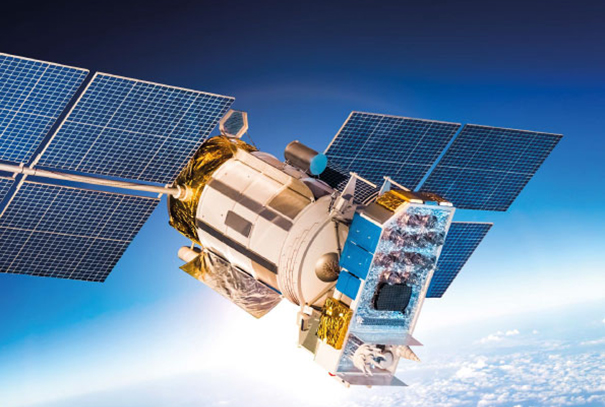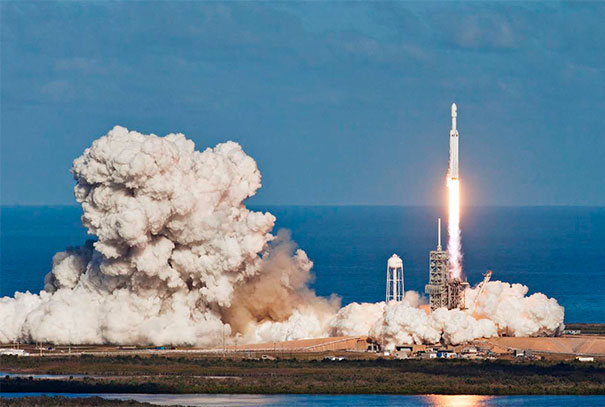
Gallagher’s aerospace team has compiled a range of strategies, tools and techniques to assist clients in coping with and managing the turbulent and transformational space insurance market.
Space insurance market specifics
Space insurance as a class of business was very successful for insurers between 2002 and 2012 with over USD4.5bn in underwriting profit earned primarily from the traditional large GEO satellite risks. The strong returns during this period attracted additional capacity to the space market from traditional net retained insurers (those insurers utilising their own capacity), Managing General Agents and privately backed entries greatly increasing competition among insurers to secure participation on placements. As a result of this increased capacity, rates were driven down to what were at the beginning of 2019 historically record low levels.
The space insurance market generates the bulk of its premium from launches of traditional large, expensive geostationary (GEO) satellites. The frequency of these launches over the last five years has reduced as the traditional large GEO operators face competition from the introduction of large low earth orbit (LEO) constellations. This reduction in overall number of premium-heavy risks available to underwriters has further driven competition amongst insurers and volatility in the space insurance market bringing the potential for the failure of just one of these large GEO launches to account for the entire premium base for the year.
As a result of the continued reduction in rates and decrease in the number of launches between 2013 and 2019, market profitability declined. The three major losses experienced in 2019 produced an overall loss making year for underwriters.
On 11 July 2019, the Vega launch vehicle scheduled to place the FalconEye-1 satellite in-orbit failed, leading to a total loss claim of EUR375m, the largest single space insurance loss ever. Many underwriters considered this event large enough to trigger a change in the market with launch and in-orbit rates amended upwards overnight for renewals and new placements.
Major news was announced on 31 July 2019 that a stalwart of the space underwriting community - Swiss Re – had ceased underwriting Space risks with immediate effect. This was a key indicator that space insurance, as a class of business, has been under scrutiny from the highest levels of industry management.

Then, after successful launch on 19 August 2019, the ChinaSat-18 satellite insured for USD250m suffered a solar array deployment failure and was declared a total loss. With these two losses combining to cost insurers circa USD620m - relative to an expected 2019 premium income of USD400m to USD450m - real change was put into motion.
In September, Euroconsult hosted their annual World Satellite Business Week Conference in Paris and talk of order-of-magnitude increases in premium rating and shrinking capacity was rife. Several insurers were reportedly reducing their capacity to protect themselves against any further losses in 2019 and the future for some of these insurers did not sound optimistic.
This conference was also the first opportunity for insurers and clients to have real dialogue about the market situation. The majority of clients understood that in order to support a sustainable insurance market, which is vital for their operation, insurers felt that change was needed.
Then on 24 October 2019 – after a successful Proton launch viewed with much trepidation by insurers – Eutelsat released a statement that they were investigating an incident on one of the two solar arrays on its EUTELSAT 5 West B satellite, insured for EUR173m. With an expectation of a large claim, this cemented underwriter’s resolve to push rates up and for their management and capacity providers to restrict capacity.
A broader view
2018 and 2019 were also significant loss years for the wider aviation and aerospace portfolio, with large claims stemming from Lion Air, Ethiopian Airlines, Boeing and Rolls Royce amongst others. Within this broader portfolio landscape, it is often the norm to view the class of “aerospace and aviation” as a single entity and thus those strong performing elements were cross-subsidising those others that were loss making. However with all segments of aerospace struggling over the last 24 months, this cross-subsidisation has no longer occurred.
Recent loss list
On a worldwide basis, insurance companies have come under increasing pressure to deliver better results to their shareholders and a higher return on investment to their capacity providers across all classes of business. They have seen a growing number of catastrophic events, loss trends increasing and deterioration in liability reserves. As such, on the majority of commercial insurance lines there has been a decrease in available capacity and rates are increasing as a result. Please see below a list of known recent losses to the space insurance market:
| Mission | Event Date | Estimated Claim Amount (USD) | Event | Anomaly Description | ||||
| 2019 | ||||||||
| Eutelsat 5WB | 24/10/2019 | EUR95m Estimated | In-orbit Anomaly | Solar array anomaly | ||||
| China Sat 18 | 19/08/2019 | $250m | In-orbit Anomaly | Satellite failed to deploy its solar arrays | ||||
| Falcon Eye 1 | 11/07/2019 | $414m | Launch Vehicle Anomaly | Second stage failure | ||||
| 2018 | ||||||||
| Worldview-4 | 15/12/2018 | $183m | In-orbit Anomaly | Loss of Control Momentum Gyros | ||||
| SOYUZ MS-10 | 11/10/2018 | $60-71m | Launch Vehicle Anomaly | Booster ruptured the core stage 2 | ||||
| TURKSAT 4B | 15/06/2018 | $60-75m | In-orbit Anomaly | Degradation of communications payload | ||||
| APSTAR 6 | 27/05/2018 | $35-40m | In-orbit Anomaly | Faulty South solar array | ||||
| O3b | 15/05/2018 | $12-18m | In-orbit Anomaly | Payload fault lost 2 of 10 transponders | ||||
| AL YAH 3 | 25/01/2018 | $115m | Launch Vehicle Anomaly | Launch directional error | ||||
| Zuma | 18/01/2018 | Unknown | Anomaly | Satellite lost. Cause unknown/ classified | ||||
| ANGOSAT-1 | 15/01/2018 | $121m | In-orbit Anomaly | Power systems fault | ||||
| 2017 | ||||||||
| VIASAT-2 | 15/12/2017 | $215m | In-orbit Anomaly | Antenna deformation during deployment | ||||
| Telstar 12 V | 11/12/2017 | $4m | In-orbit Anomaly | Communications payload issue | ||||
| METEOR 2M-1 | 28/11/2017 | $60m | Launch Vehicle Anomaly | Failure of the Fregat upper stage | ||||
| Chinasat 9A | 18/06/2017 | $144m | 3rd stage roll control system failure | Power systems fault | ||||
| AMC – 9 | 17/06/2017 | Deductible erosion | In-orbit Anomaly | |||||
| Source: Gallagher information / Seradata SpaceTrak Database | ||||||||
Looking forward
The total effect of the above events on the space insurance market won’t really be known until well into 2020 after key programmes have been seen by the market. Although we were expecting to see deployed capacity reduce alongside rate increases as we progress into 2020, the amount of total capacity looks to have stayed the same with a small reduction in supporters behind Insurers and certain Managing General Agents. That being said there is ample capacity available and policies providing broad cover will continue to be available to our clients.
Many underwriters are now focusing more closely on the technical elements of the risk and loss formulas in their analysis making this is a key area for our clients to focus on and ensure that their coverage is fit for purpose. Underwriters have an increased drive to differentiate between clients based on the quality of their risk management approach.
As underwriters look to achieve increased premium rates compared to the record low rates in 2018, the spread from the highest to lowest quotes is significant and higher sums insured are becoming harder to complete without paying some markets on the syndication rates well over the average for the placement. We are recommending that clients consider alternative placement structures for review and comparison to evaluate whether any of these better fit with their budget and risk appetite. Depending on available capacity and appetites of insurers as the market changes, creative alternatives may well result in a significant benefits in premium cost.
New technologies are being implemented by satellite manufacturers and launch vehicle providers and these will impact our client’s risks and their businesses. We tailor our services and products to address such individual needs. Discussing space projects and insurance requirements at the outset will ensure that all parties in the insurance buying chain are aligned and strategy and decisions can be made based on a firm understanding of all key mission characteristics and client needs.
In summary, at Gallagher Aerospace the fundamentals stay the same. To ensure we can provide our clients optimal solutions, we continue to be fully engaged with the insurance market to understand each insurer’s appetite and business focus. In parallel, we will continue to work with our clients to ensure that their needs are well-framed and that we deliver products best in the most effective way to ensure we can provide the cover that fits their needs in the most cost effective manner.
10 year space premium and losses




